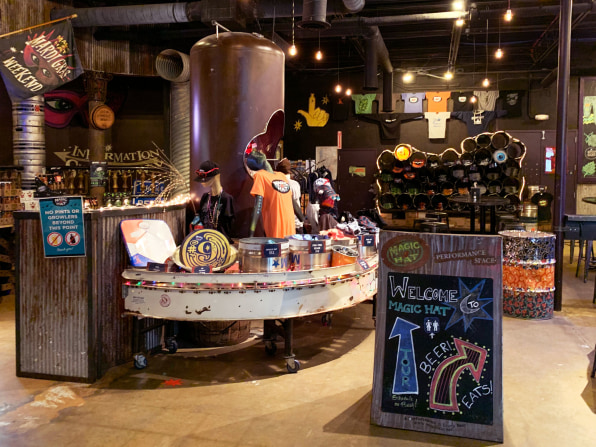If rosé got really big in 2014 and became a “lifestyle” the year after that, 2019 would be the year it got so big that everything that was not previously rosé became rosé too.
There are now rosé-flavored energy drinks, rosé-flavored candy, rosé-flavored condiments (jam, vinegar, and, yes, mustard). And as of this year, we will also have no fewer than four brands of rosé-flavored vodka, in addition to multiple kinds of rosé gin, beer, cider, and spiked seltzer.
Even alcoholic drinks that are not rosé are now trying to capitalize on the incomprehensible hugeness of what rosé has become. It raises the question: Why would an alcoholic drink want to taste like a wholly different alcoholic drink? Cocktails that involve wine and beer are delicious. But an amalgam of multiple discrete types of alcohol conjures horrific flashbacks of sneaking tiny swigs from a dozen different bottles from my parents’ liquor cabinet into a water bottle. That is something that no one should ever drink, much less sell.
There are two main factors at play that led to the advent of wine-flavored liquor. One of them has to do with the way the beverage industry is experimenting with marketing to more drinkers. And the second, of course, is that rosé is bigger than alcohol: It’s an aesthetic. After all, why wouldn’t you capitalize on the wine that has its own Instagram museum?
Why rosé is everywhere
Let’s get this out of the way: Rosé is good. The kind of rosés we think of when we think of rosé in 2019 are generally not the sweet magenta white zinfandels of the 1970s, which lots of people understandably despise. They are whispery pale pink and dry as a bone, which makes them largely neutral, flavor-wise. Sure, you might pick up some strawberries or citrus, but these are flavors that very few people truly hate, and even if they do, they’d barely taste them anyway.
But this is not why rosé has suddenly eclipsed the confines of the wine section. It’s because rosé is no longer a drink but a way of life, so much so that it’s almost a cliché to even point this out.
“Rosé pulled off a neat trick,” writes Sarah Miller in a piece for Eater about the cultural baggage associated with rosé, “It reminded people of something fun and a little silly from the past, and even as it exchanged the silliness for sophistication — for marvelousness — it maintained that sense of fun. ... Its enjoyment was intertwined with the delicious smugness that comes with having good taste and knowing it.”
Rosé’s first big tipping point occurred in the US around the summer of 2014, the year that Whole Foods, after noticing its rosé promotions were hugely successful in Southern California, decided to extend the promotion nationally. There were a few reasons for its immediate appeal: First, you don’t actually have to talk to a sales representative in order to know what you’re getting. As Eater notes, you can kind of tell what a rosé will smell and taste like simply by looking at the color of the bottle, which isn’t always the case for reds or whites. They are also, for the most part, cheap.
That rosé is also pink and pretty is of crucial importance, and it is probably not an accident that its popularity coincided with the elevation of the color pink as cultural icon, particularly within the food industry. And though this is presumably part why rosé is so often coded as feminine — and therefore often derided in the same breath as anything pumpkin-spiced — in the US, men and women drink basically the same amount of it.

/arc-anglerfish-arc2-prod-mco.s3.amazonaws.com/public/GJPUERHYYNBNJD4JQEIGQOZKHM.jpg)



/arc-anglerfish-arc2-prod-tbt.s3.amazonaws.com/public/VAQDNQYA75BVDF4AJ7EO2BUPFQ.JPG)
